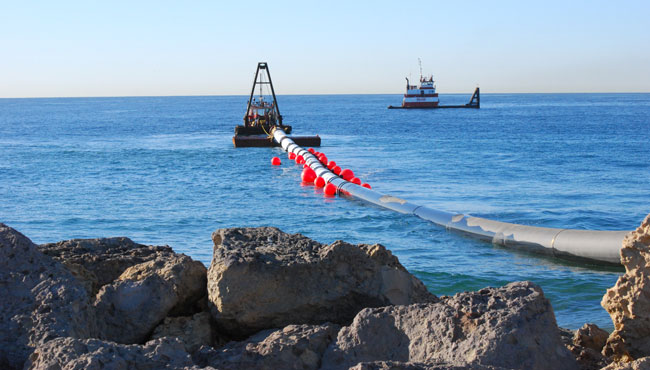Calleguas Regional Salinity Management Project, Ventura County, California
Padre has been involved in the development and implementation of numerous phases of the Calleguas Regional Salinity Management Project. Padre’s involvement began with the preparation a Program Environmental Impact Report (EIR) and Environmental Assessment (EA) for the 32 mile-long wastewater pipeline, extending from Simi Valley to Oxnard, on behalf of the Calleguas Municipal Water District and Bureau of Reclamation. The purpose of the project is to dispose of tertiary treated wastewater and byproducts of advanced treatment (brine) that cannot be discharged to local streams due to a chloride Total Maximum Daily Load (TMDL) limits. Primary issues assessed in the document included water quality (ocean and freshwater), water quantity (loss of current wastewater discharge to stream), biological resources, noise, air quality, cultural resources and agriculture.
This project was complex and controversial requiring substantial stakeholder involvement. Stakeholders include various water districts, municipalities, regulatory agencies (e.g., Regional Water Quality Control Board), public interest organizations (e.g., Environmental Defense Center) and the general public. Therefore, Padre actively participated in numerous meetings directly associated with the project as well as the related Calleguas Creek Watershed Chloride Total Maximum Daily Load (TMDL) meetings along with the stakeholders.
Since the completion of the original Program EIR, Padre has continued to support the subsequent CEQA/NEPA compliance requirements for the project, as well as obtaining project component specific permits. A Supplemental EIR/EA was required to address a change in the location and configuration of the project ocean outfall. Padre supported the siting and refinement of an ocean outfall for the project including the environmental review of several outfall alternatives. This effort entailed providing support to the engineering design team to conduct the necessary site investigations for the proposed outfall.
Upon completion of the Supplemental EIR/EA, Padre provided permit acquisition services for the District which included a Coastal Development Permit, State Tidelands lease, Sections 404 and 401 permits and NPDES Permit.
Construction of the projects ocean outfall was completed in July 2010. In order to minimize environmental impacts, the project included an approximately 3,200 foot horizontal directional drill from the Port Hueneme public beach to an offshore transition pit. During installation, Padre provided both onshore and offshore mitigation compliance monitoring services including frac-out monitoring, marine mammal monitoring and archaeological monitoring.

